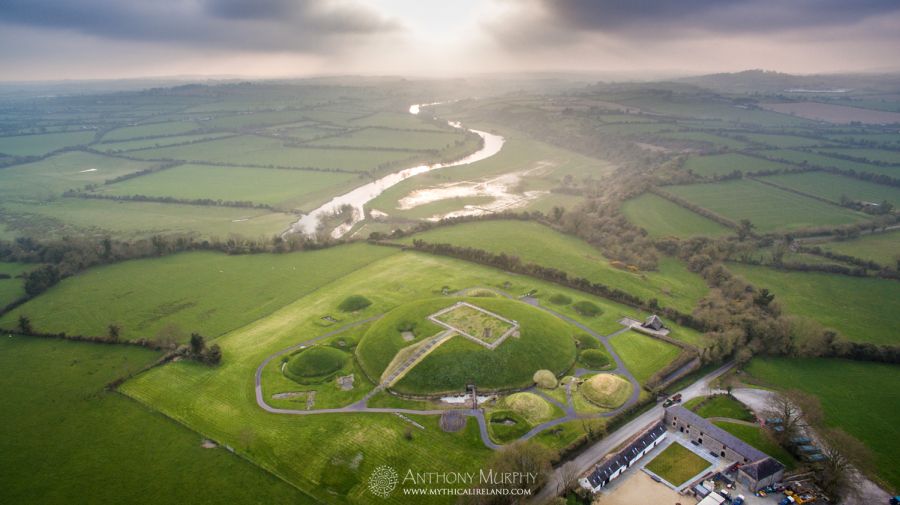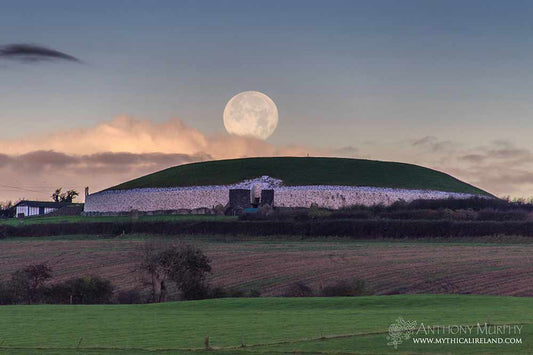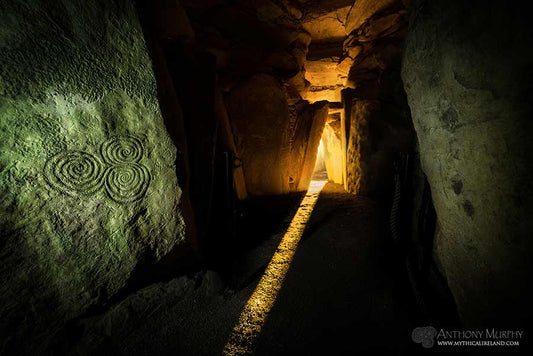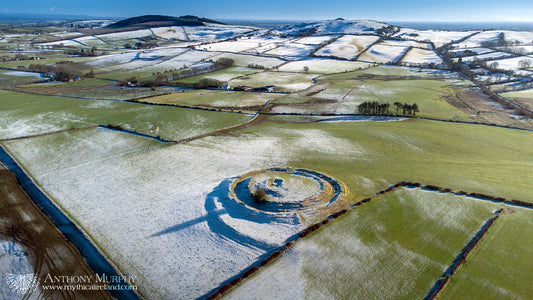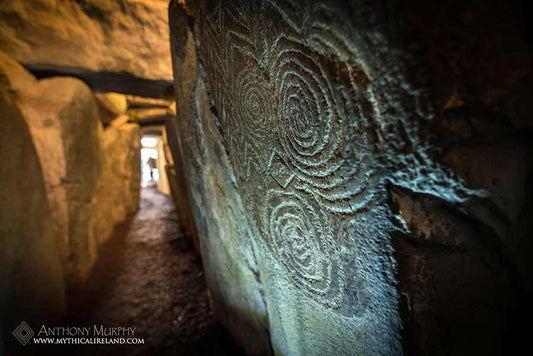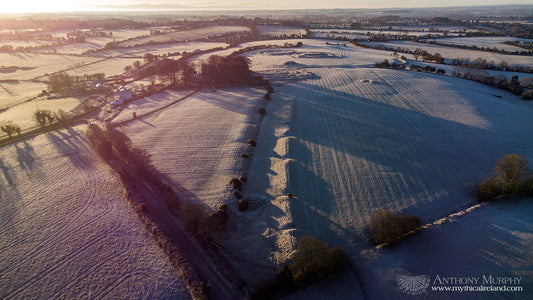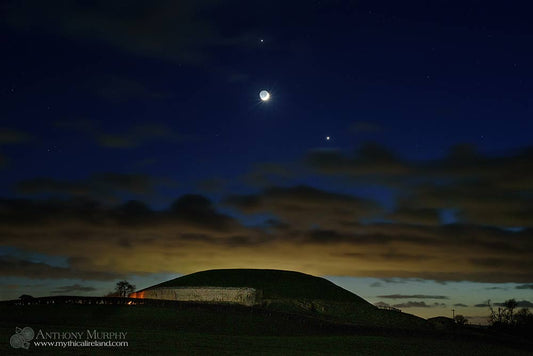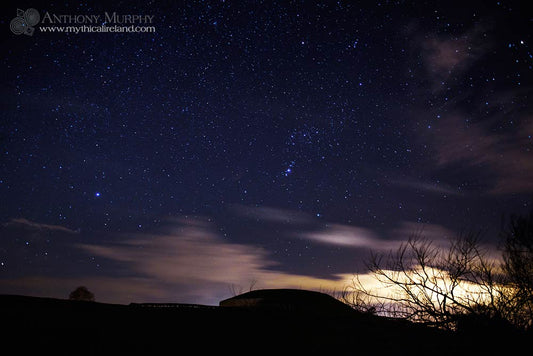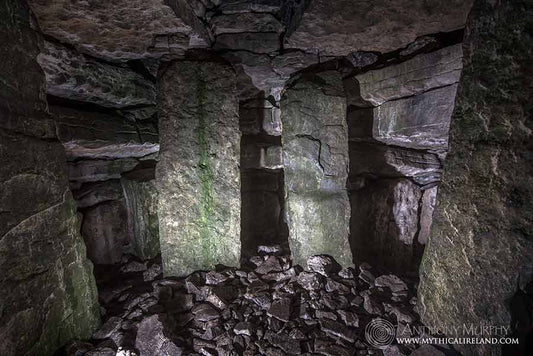While Newgrange is by far the most famous of the three Boyne Valley passage-mounds, Knowth is by far the most impressive in terms of megalithic art, scale and layered history. There were no fewer than 10 phases of activity at Knowth from the Stone Age through to modern times. The main mound has 127 kerb stones and is surrounded by 17 satellite mounds. It is one of the world's greatest archaeological treasures.
Knowth (Cnogba) – sister of Newgrange
Knowth contains one quarter of all known megalithic art in western Europe, has two passages, and a total of 18 smaller satellite mounds. The site was excavated and thoroughly investigated archaeologically over a period of 40 years and is now open to the public (from Easter through to Halloween; closed for winter) who can visit through the Brú na Bóinne Visitors' Centre in nearby Donore.

There are two passages at Knowth (Newgrange has one) which face, roughly speaking, towards the east and towards the west. A long-held theory that the passages were aligned towards sunrise and sunset on the spring and autumn equinoxes has, in recent years, been found to be untrue. A new theory, backed by scientific data about the orientation of these passages, points towards a lunar function for Knowth.
This lunar function is supported by research which claims that the builders of this monument had a good working knowledge of the complicated movements of the moon. Such knowledge would have enabled the builders to predict eclipses and other astronomical events. Some of the many carvings on the 127 kerbstones at Knowth could be representations of lunar counts and calculations.
It is probably Knowth's astonishing quantity of art which makes it more impressive than Newgrange. Many of the kerbstones are decorated, while there is significant decoration in both passages and inside some of the satellite monuments.
There was significant activity at Knowth over a long period of time. Archaeologist, Professor George Eogan, found that there were 10 separate phases of activity at the site from the earliest times to the modern era. There may have been settlement at Knowth as early as 6,000 years ago.

During the Iron Age, the site was fortified and a huge ditch dug around the mound. In later times, Knowth became a significant site as the capital of the kingdom of Brega.
There are some very ancient myths about Knowth and how it got its name. One story relates that a noble woman, Bua, was buried there and the "great hill" was built up over her. These placename myths are still in existence today, in a collection called the Dindshenchas.
There are a total of 18 smaller satellite mounds around the main mound, many of which had their own stone passages. Some also contain megalithic art.
A number of very significant finds and artefacts were uncovered during 40 years of excavations at Knowth. A flint macehead, a stone phallus and a giant stone basin are among the interesting items found.
Finding Easter at Knowth
By Gillies Macbain
NEWGRANGE
There is a theory that the midwinter sun shines into the chamber of Newgrange exactly on the shortest day of the year. many people know this "for a fact", and could prove it to you by taking you out to Brú na Bóinne on the 21st of December, and – advanced bookings and local weather conditions permitting – showing you that this is so.

The fact is that the sun shines in to the Newgrange passage for several days before and several days after the winter solstice. If you believe that Newgrange was a deliberate and accurate construction (and I do) you will need to be more precise. You will need to be aware that there was no December 21st in Neolithic Ireland. You will need to be aware that the modern 22nd of December can also fall on the (astronomically identifiable) winter solstice (in the northern hemisphere). You will be wise to remember that the year is 365 and 1/4 days long – and for this reason the 365 and 366 day intervals between the Newgrange events mean that no two of the Newgrange sunrises are ever exactly one year apart, nor can be.
You will then need to remember that the sun set a little further to the south in the period when the passage mound was built, sometime around 3150BC. You would need a basic computer astronomy programme to indicate the angle of the sunrises on the horizon in that era. These programmes are cheap, popular, and nowhere nearly as complicated to use as they sound.
Finally, having done all of that, you would need to show that the focus of the construction was to identify the sunrise that was closest to winter solstice sunrise, rather than to give a "window" of a certain number of days either side of the solstice.
Such a "window" existed, and, though it has changed with the passage of time, still exists. It has the value that in uncertain weather, the approach and departure of midwinter could be monitored, even though the day itself dawned sunless. In 3150BC, this would have extended from 15 days before the solstice to 15 days afterwards.

This leaves open a second interpretation of the Newgrange passage – that it was focused to answer the question:
"Which new moon (or full moon) is the first of the new year?".
MOVEABLE FEASTS
Familiarity with our own calendar sometimes makes us oblivious to its eccentricities. Our system of European Union bank holidays has added to, but failed to obliterate, the seasons of the churches' year. The main christian feasts are Christmas – a fixed feast with regard to the calendar year – and Easter – a moveable feast with regard to the calendar year. Church seasons such as advent and lent are then fixed according to these fixed or moveable dates.
The exact date of Easter was a source of doctrinal dispute over several centuries. It was one of the issues between the roman catholic church and the "Celtic church" tradition. But for all the disputants easter had a formula that was based upon the first full moon to follow the vernal equinox, as did the Jewish passover from which the Christian tradition arose.
So was Newgrange constructed to mark a feast or festival of a fixed nature – or to identify a particular phase of the moon, a full or new moon moveable feast? We do not know.
KNOWTH
One pointer would be if the passages at Knowth also admitted the sun. The rising sun moves along the horizon from south east to north east as the year proceeds. Half way between is the spring equinox. How neat it would be for the supporters of the fixed feasts if the passages at Knowth faced due east and due west to the rising and the setting of the equinoctial sun!
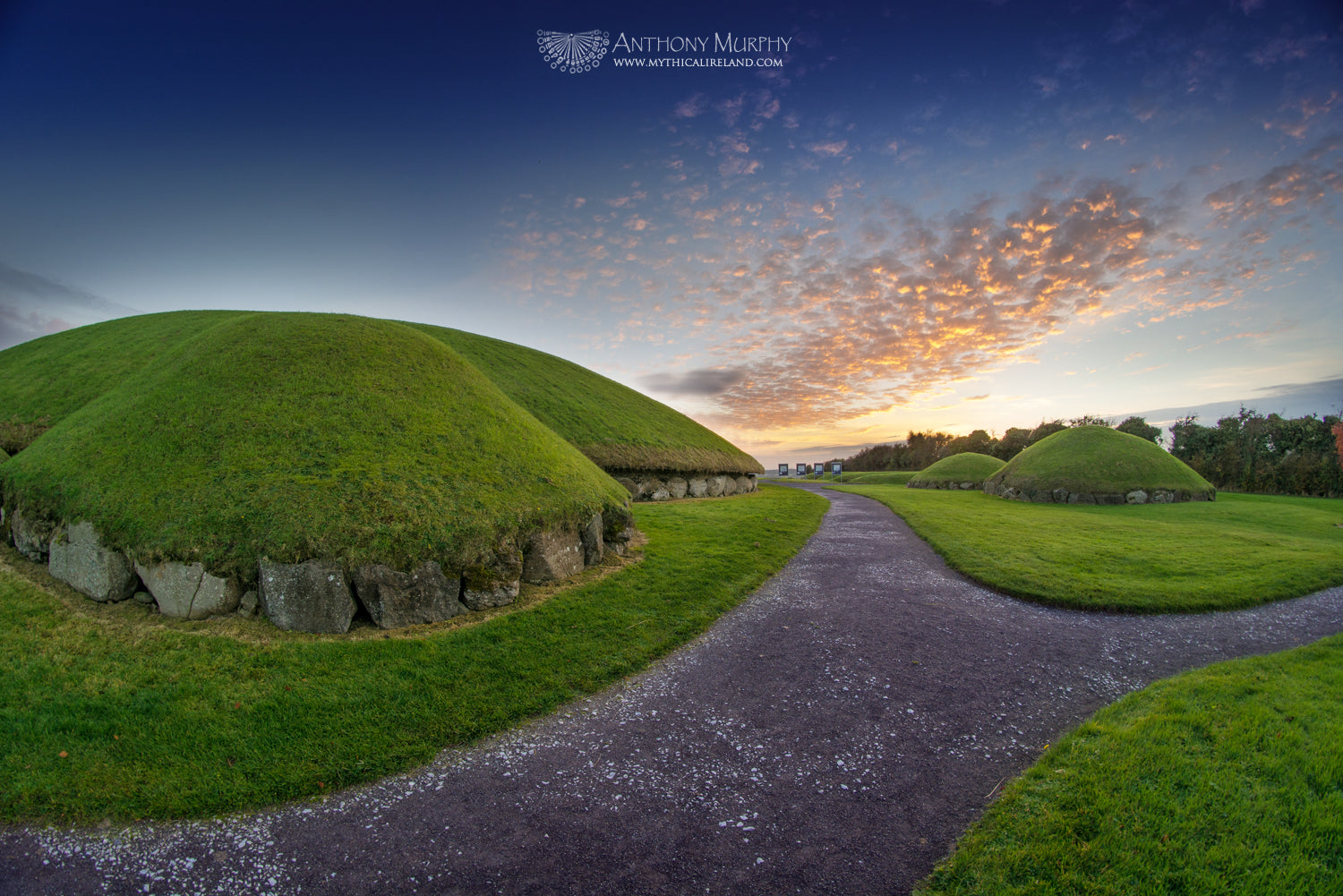
Many have hoped this, or even fudged the data to try and make it so. But the truth is different. The days at which the very long and narrow – and thus very accurate – Knowth passages point are : six days from the equinox dawn (knowth east) and eighteen and a half days from the equinox dawn (knowth west).
This apparent waywardness, after the very precise focus of Newgrange, has been a source of bafflement to many, and would have remained so if a connecticut retired doctor had not come up with a solution – the only one put forward so far.
FINDING EASTER AT KNOWTH
The solution rests upon the neolithic builders of Knowth being a culture which counted the passage of time in lunar months. This is not a big assumption – it would be most anachronistic to expect them to have evolved any division of time other than the natural one. They also dwelt within a mile or two of the tidal reaches of the Boyne estuary, where the tides faithfully keep lunar, not solar time.
The connecticut doctor, Charles Scribner, pointed out the possible significance of two days – "vernal equinox plus six days" – and "vernal equinox minus 18 and a half days".

If you habitually measure out the year in lunar months – as do the native americans, the jews, and many well documented cultures – these two days on which the sun is aligned with the knowth passages are: first: knowth east (equinox plus 6): three synodic lunar months before the summer solstice - six synodic lunar months before the autumn equinox, and nine synodic lunar months before the eve of winter solstice, respectively. Second: the passage of knowth west is thirteen synodic lunar months before the following vernal equinox.
All of these figures are for the period around 3300 b c. this has to be said because the lengths of the seasons vary in a slow cycle over the millennia.
So this is how you can identify in advance the christian church moveable feasts of the following year using knowth: observe the sun reaching the passage of Knowth West – the one that is still open – in early spring. There are now 13 moons until the following year's vernal equinox. now, after dusk falls, observe the day of the moon. If full moon is to follow in two days time then the following year's 'paschal' full moon, the one that defines easter, will be two days after march 21st or wherever your vernal equinox is falling in that year of that era.
This could, like the Newgrange orientation, be a coincidence. but when the opposite passage at Knowth East can be 'read' to predict the other three of the four points of the year (as they stood with the season lengths of 3300bc or thereabouts) – the odds lengthen.

Knowth West also has a kink in the passage. the inner few metres may represent a slightly earlier passage incorporated into the mound. The case is immeasurably strengthened when it is found that the orientation of the inner passage, if projected beyond the mound, would admit the sun on a date that is 10 and a half days after equinox – or 12 synodic lunar months before the following equinox. this too, if it admitted light, could be used to predict the date of easter of the year to follow.
FACT AND SPECULATION
Thus it is a fact that both Knowth and Newgrange could be used to identify lunar or 'moveable' feasts. It is, however, like finding an abacus. Simply because a calculation can be performed on an ancient abacus it does not follow that that calculation was the original purpose of its maker, to suggest that it was can only be speculative.

Nevertheless, the still-intact and open passage of Knowth (West) still functions to admit the light and foretell the full moon of easter 13 months ahead. This function is less affected by the passage of the millennia than the functions of Knowth East or of Newgrange itself. To predict a festival in advance is also of more practical value than merely to mark a solstice or equinox as it occurs. Irish weather makes such prediction vital , for – as many know to their cost – a midwinter morning can choose to be overclouded.
HER DAY IN THE SUN
There may still be a few conservative scholars who would be reluctant to give scandal to the faithful by admitting that the festival of easter is not of christian origin – but this fact is already apparent from a cursory reading of the gospels themselves. There may even be a lingering prejudice against the darkness, the moon, and the number 13 – it all smacks too much of halloween and the fairies. But this does not excuse the researcher from taking a rational and consistent view.
As things stand at the present, we neither accept nor reject the orientations of the Bru na Boinn passages, but make a marvel of one while dismissing another two that are considerably longer and thus more precise. Is Newgrange a solitary anomaly among passage mounds? A clock with only one hand? A bell that strikes but once a year?
Knowth is an older, more decorated, more complex passage mound than Newgrange. The instincts of the archaeologists point to an equinoctial connection. They should trust their instincts and persist with this line of enquiry. There is more to discover. Newgrange is neither the earliest marvel at Brú na Bóinn nor the only one.
It would be a shame to deny Knowth her share of the glory, her day in the sun.


